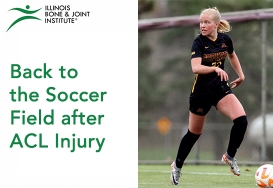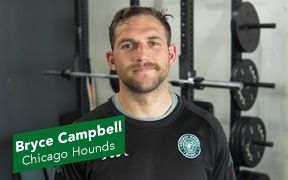This article is part of the Ultimate Guide to Knee Pain Relief.
Having runner's knee is both painful and aggravating when you don’t know what caused the condition or which treatment options—conservative and aggressive—are available so that you can get back to running and doing all the other things you love.
IBJI recently chatted with Tom Antkowiak, MD, MS, an experienced, board-certified orthopedic surgeon who specializes in sports medicine and arthroscopy, about runner’s knee, or patellofemoral pain syndrome.
“Doctor A,” as his patients call him, has a particular interest in minimally invasive arthroscopic techniques, and he sub specializes in advanced shoulder arthroscopy, knee ligament/cartilage reconstruction, and hip arthroscopy. His responses—below—have been edited and condensed for space.
Frequently Asked Questions Runner’s Knee
What Is Runner’s Knee?
Dr. Antkowiak: The term runner’s knee is really a misnomer as these issues can occur in any athlete. Generally, patients suffering from runner’s knee feel pain in the front of their knee, near or under the knee cap.
What Does Runner’s Knee Feel Like?
Dr. Antkowiak: For active patients with runner’s knee, they report feeling a deep pain or ache in their knee caps.
It’s often a persistent, toothache-type feeling which tends to worsen with increased activity, especially if it involves repetitive knee bending. Squatting, bending, and walking down staircases or hills can worsen your symptoms.
What Can You Do to Prevent Getting Runner’s Knee?
Dr. Antkowiak: Avoiding runner’s knee starts with good mechanics, balanced muscle strength, and optimized body weight.
Prevention is best achieved by ensuring that your leg muscles are strong and balanced. Most patients can accomplish this with their basic workout routine. You should always perform exercises correctly using good mechanics. If you more guidance, consult a physical therapist for help.
What Are Treatment Options for Runner’s Knee?
Dr. Antkowiak: Knee doctors start treating runner’s knee with the basics:
- rest,
- icing, and
- anti-inflammatory medication.
Rest is necessary to allow the knee to recover. After a short period of recovery, the focus of treatment shifts to mechanics, muscle strengthening, and weight loss when necessary. A supervised course of physical therapy can be beneficial during this period. Most cases of runner’s knee will resolve with this type of program.
What Can You Do to Prevent Getting Runner’s Knee?
Dr. Antkowiak: Avoiding runner’s knee starts with good mechanics, balanced muscle strength, and optimized body weight.
Prevention is best achieved by ensuring that your leg muscles are strong and balanced. Most patients can accomplish this with their basic workout routine. You should always perform exercises correctly using good mechanics. If you more guidance, consult a physical therapist for help.
What Are Treatment Options for Runner’s Knee?
If knee pain symptoms persist, there are further options available. Some patients require a more potent anti-inflammatory treatment (e.g., an injection of cortisone in the knee) to get back to normal. This simple office-based injection can provide immediate and long-lasting relief for runner’s knee patients with pain that doesn’t go away.
There are other types of injections we can use in patients that require treatment beyond cortisone, such as:
- Lubricant gel, which can help to cushion and lubricate the problematic surfaces under the knee cap,
- Biological treatments, like PRP (platelet-rich plasma), which when injected into the injured area, can jumpstart healing, and
- Arthroscopic surgery, which can provide pain relief when other options have not yielded results.
When Should You See a Doctor for Runner’s Knee?
Dr. Antkowiak: If you have knee pain that keeps you from thoroughly enjoying the activities you love, see your orthopedic sports medicine physician.
Big News! Check Out Which IBJI Surgeons Made Chicago Magazine’s “Top Docs for Fitness Junkies” List
Any Other Advice for Helping Athletes Stay Pain-free?
Dr. Antkowiak: The key to injury prevention—whether it’s runner’s knee, shin splints, ankle pain, hamstring tightness, or stress fractures—is to stay strong and flexible by:
- Warming up before your chosen activity,
- Maintaining a healthy body weight,
- Building good muscle strength, and
- Giving your body time to recover between periods of intense activity.
Ultimately, knee doctors treat many injuries that are caused by overuse. Since cross-training can help to prevent these overuse issues, switch up your routine (cross train), and spend some time doing low-impact activities, like cycling, swimming, or the elliptical trainer. These forms of exercise are generally much easier on your knee than running, and they can help work other muscle groups to boost overall knee health.
Pain Relief for Runner’s Knee
IBJI is here to help you start healing. We offer a wide array of non-surgical treatment options for relieving discomfort caused by runner’s knee.
Our nationally recognized knee doctors can diagnose specific underlying conditions that contribute to your knee pain and provide an array of non-surgical treatment options, such as injections to reduce knee inflammation, boost lubrication, increase cushioning, and—possibly—bring back normal biological function.
IBJI’s top-notch physical therapists can aid with mechanics, strengthening, and weight loss. Plus, patients may benefit from technical analysis of their running gait pattern to identify specific mechanical issues that you can modify.
If your knee problems require arthroscopic surgery to address anatomic issues, our fellowship-trained sports injury surgeons have the experience, technology, and knowledge to help get you back to what you love.
Schedule online with a Knee Doctor →
You might also like:
- What Is Runner's Knee?
- Knee Cap Won’t Stay Put? It May Be Patellar Tracking Disorder
- Four Common Knee Injuries
- Treatment Options for Aching Knees from Osteoarthritis
*This content is for information only and is not intended to replace the diagnosis, treatment, or medical advice from your treating healthcare professionals. The content does not provide medical advice, does not constitute the practice of medicine or other healthcare professional services, and does not create a doctor-patient relationship. You should not rely on this information as a substitute, nor does it replace professional medical advice, diagnosis, or treatment. If you have concerns or questions, seek the advice of your healthcare professionals. If you think you may have a medical emergency, call your doctor or 911 immediately. Do not rely on electronic communications or communicate through this website for immediate, urgent medical needs. This website is not designed to facilitate medical emergencies. The use of the information is at the reader’s own risk. The links are provided for information and convenience only. We cannot accept responsibility for the sites linked or the information found here. A link does not imply an endorsement of a site.





